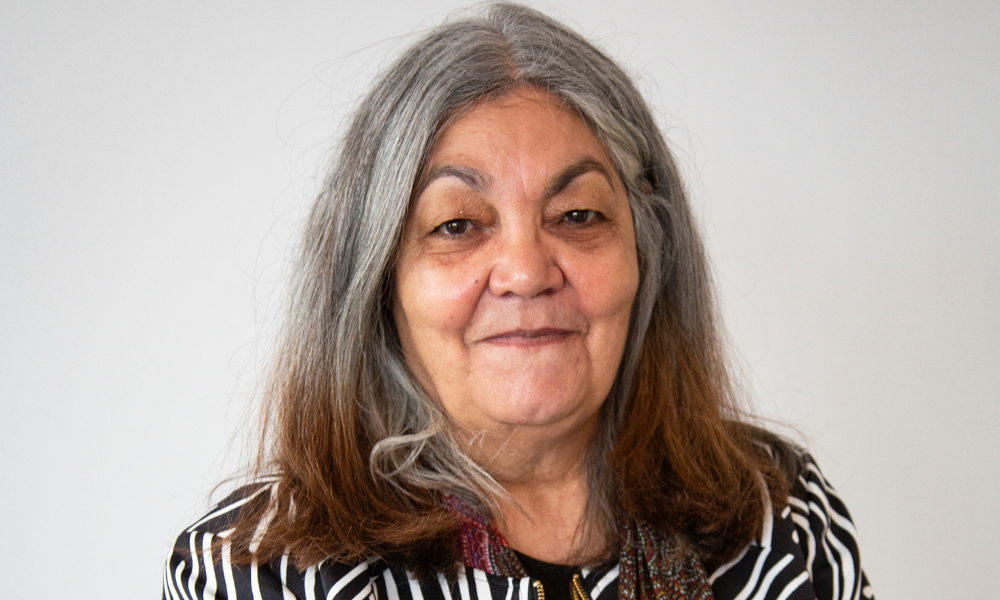
Human resources plays important role in Reconciliation Action Plan, says director Jenny Brown

The Australian Red Cross is one of Australia’s most important organisations, acting both locally and globally to save lives when needed by helping in emergencies and disasters.
For 110 years, the Australian Red Cross has been a pillar of the Australian community, so it is not surprising that it has taken a lead on Reconciliation.
In time for NAIDOC week (July 7-14), the Australian Red Cross has just launched its fourth Reconciliation Action Plan (RAP), reaffirming its commitment to being a culturally safe organisation for First Nation peoples, and the path towards meaningful, long-term reconciliation.
“Our latest Reconciliation Action Plan – Reconciliation In Action - is endorsed by Reconciliation Australia and builds on a decade’s worth of expertise and invaluable insights garnered from previous initiatives,” Jenny Brown, Director First Nations Centrality, Australian Red Cross, said.
“This Reconciliation In Action is all about establishing a solid foundation that will grow our impact in the years ahead, so our reconciliation vision can be realised.”
The RAP is focused on building stronger fundamentals which will progress Australian Red Cross’ long-term reconciliation ambitions. The RAP was developed with extensive consultation and collaboration with The Healing Foundation, a peak Aboriginal and Torres Strait Islander-led organisation, and more than 2,000 Australian Red Cross people, including 55 Aboriginal and Torres Strait Islander colleagues from 14 language groups across every state and territory.
There are four RAP types — Reflect, Innovate, Stretch and Elevate. Reconciliation In Action is an Innovate RAP. An Innovate RAP focuses on strengthening relationships with Aboriginal and Torres Strait Islander people and piloting strategies for further reconciliation commitments and to empower Aboriginal and Torres Strait Islander people. An Innovate RAP is implemented over two years.
“The key difference this time around is a strengthened approach to governance and leadership,” Brown said.
The Australian Red Cross has established several groups that will be directly responsible for the implementation of the RAP, including the Deputy CEO as the executive sponsor, and frequent oversight from the Board.
“Together, these groups, including our executive sponsor, RAP Implementation Group, State and Territory lead and First Nations SteerCo, will work together and hold each other accountable for delivering the RAP and ensuring nothing falls through the cracks,” she said.
With Reconciliation In Action, the Australian Red Cross has transitioned from a Stretch RAP to an Innovate RAP, Brown said.
“Innovate RAPs are focused on strengthening relationships with Aboriginal and Torres Strait Islander people, and piloting strategies for further reconciliation commitments that support Aboriginal and Torres Strait Islander people.”
Last year, Woolworths unveiled its new RAP, which outlines its commitments to First Nations employees, communities and businesses over the next two years.
Human resources were included in the consultation process in developing Reconciliation In Action, she said, and several reconciliation actions fall under human resources.
“Truth-telling plays an essential role in reconciliation, helping to heal deep-rooted wounds and build trust between communities. The deeper our understanding of our shared history becomes among all people in Australia, the greater our appreciation and celebration of Aboriginal and Torres Strait Islander peoples, leading to collective growth and well-being for all,” Brown said.
The People and Culture teams also play an important role in this education piece, providing opportunities for staff to participate in formal and structured cultural learning, she said.
“This RAP is committed to improving employment outcomes by increasing Aboriginal and Torres Strait Islander recruitment, retention, and professional development. Our human resource teams are in the process of co-developing and implementing a plan that will enable this. This team is also undertaking a review of any barriers to Aboriginal and Torres Strait Islander participation in our workforce and sourcing solutions to overcome these barriers.”
Last fall, employers across Australia reiterated their commitment on working with Indigenous communities despite "The Voice" referendum rejection on Saturday.
Reconciliation is an ongoing journey, according to Brown. “While there have been notable strides towards reconciliation in recent years, there is still much work to be done to address historical injustices, heal past wounds in a just, equitable and reconciled Australia.”
As an organisation, the Australian Red Cross is being open and honest, knowing it still has much more to do, Brown said.
“Reconciliation In Action doubles down on our commitment to meaningful, long-term reconciliation and to being a culturally safe organisation for First Nations peoples.
“We support people during times of need and crisis. Our deep ties and connections in the community mean we have an incredibly important and influential role to play in advancing reconciliation and strengthening relationships between Aboriginal and Torres Strait Islander peoples and non-Indigenous peoples.”